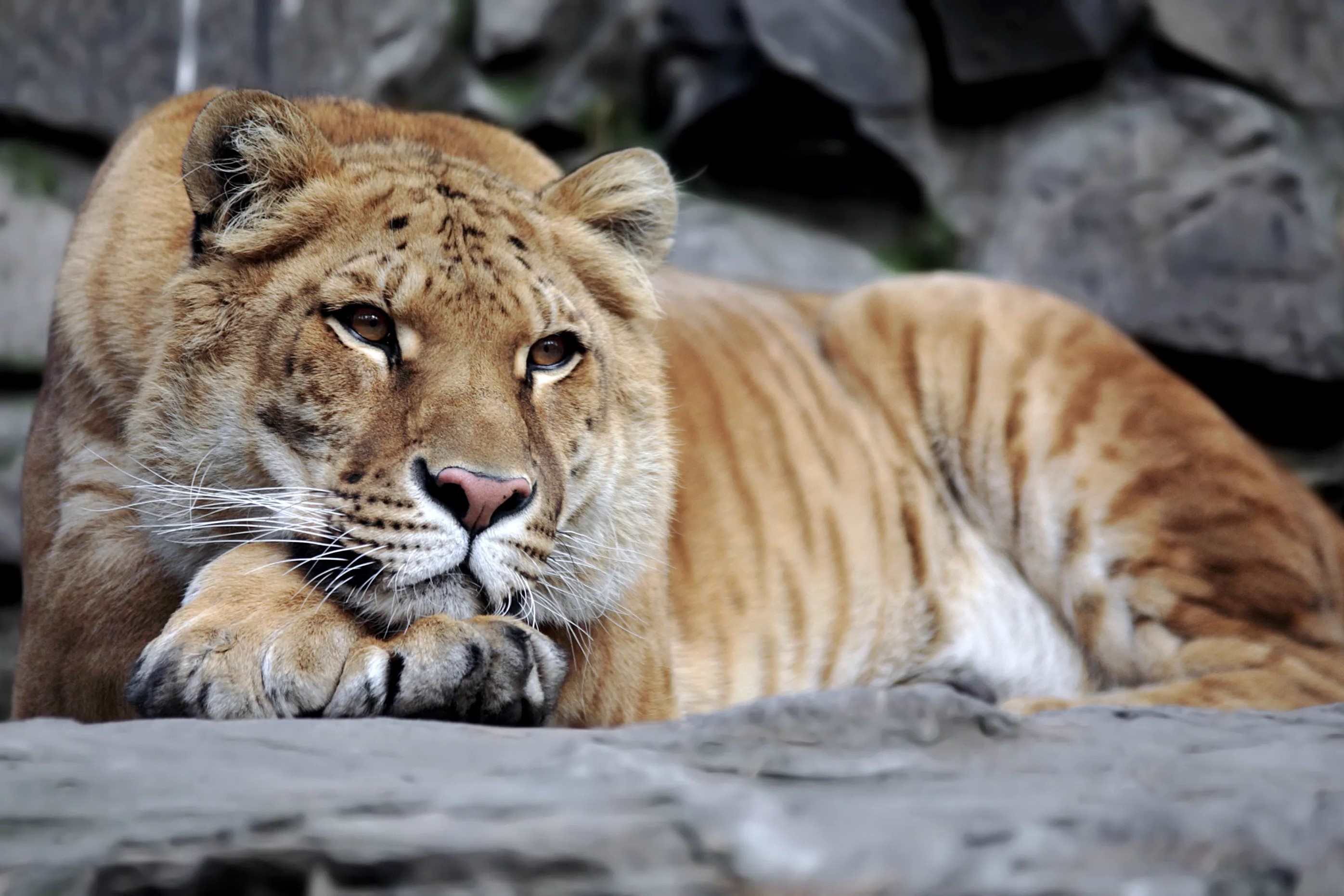
Ligers, the offspring of male lions and female tigers, are among nature's most intriguing hybrids. Ligers possess unique characteristics and abilities that set them apart from their parent species. In this introduction, we'll unveil 14 captivating facts about these majestic creatures, shedding light on their size, strength, and behavior. From their impressive size, making them the largest of all known big cat hybrids, to their unexpected social behaviors and rare existence in the wild, each fact about ligers invites curiosity and wonder. Whether you're a wildlife enthusiast or simply fascinated by the animal kingdom's wonders, these insights into ligers will surely pique your interest and expand your knowledge on this extraordinary hybrid species.
Key Takeaways:
- Ligers are fascinating hybrid animals, a result of lion and tiger crossbreeding. They are the largest big cats, with a unique blend of physical traits from both parents, making them formidable predators.
- Ligers have a mix of behaviors inherited from lions and tigers. They are social, love swimming, and have a unique vocalization. However, their existence raises ethical concerns about conservation and breeding.
What is a Liger?
A liger is a hybrid animal resulting from the crossbreeding of a male lion and a female tiger. These fascinating creatures combine traits from both parent species, creating a unique and captivating animal.
Physical Characteristics of Ligers
Ligers are known for their impressive size and distinct appearance. Here are some intriguing facts about their physical traits:
- Size: Ligers are the largest of all big cats, often growing larger than both lions and tigers. They can weigh up to 900 pounds and measure over 10 feet in length.
- Appearance: They have a blend of features from both parents. Ligers typically have a tawny coat with faint tiger stripes and a lion-like mane in males.
- Growth Rate: These hybrids grow at an astonishing rate, often reaching full size by the age of 3.
- Strength: Ligers possess incredible strength, combining the power of both lions and tigers. This makes them one of the most formidable predators in the animal kingdom.
Behavior and Temperament
Ligers exhibit a mix of behaviors inherited from both lions and tigers. Their unique temperament makes them fascinating to study.
- Social Behavior: Unlike tigers, which are solitary, ligers tend to be more social, similar to lions. They enjoy interacting with humans and other animals.
- Swimming: Ligers love water and are excellent swimmers, a trait inherited from their tiger parent.
- Roaring: They can roar like lions but also make chuffing sounds similar to tigers. This unique vocalization sets them apart from other big cats.
Habitat and Lifespan
Ligers do not exist in the wild and are typically found in captivity. Their habitat and lifespan are influenced by their unique genetics.
- Habitat: Ligers are usually found in zoos and wildlife sanctuaries. They require large enclosures to accommodate their size and need for exercise.
- Lifespan: In captivity, ligers can live up to 20 years, which is comparable to the lifespan of lions and tigers.
Diet and Feeding Habits
Ligers have a voracious appetite and require a substantial amount of food to sustain their large bodies.
- Diet: They primarily eat meat, consuming up to 25 pounds of food per day. Their diet includes beef, chicken, and other meats.
- Feeding: Ligers are fed multiple times a day to ensure they receive enough nutrients to maintain their health and energy levels.
Genetic and Reproductive Facts
The genetics of ligers are complex, leading to some interesting reproductive characteristics.
- Sterility: Male ligers are typically sterile, meaning they cannot reproduce. However, female ligers can sometimes mate with lions or tigers, producing offspring known as li-ligers or ti-ligers.
- Genetic Diversity: Ligers inherit a mix of genes from both parents, leading to a diverse range of physical and behavioral traits.
Conservation and Ethical Considerations
The existence of ligers raises important questions about conservation and ethics in animal breeding.
A Final Roar on Ligers
Ligers, those magnificent beasts blending the fierce majesty of lions with the powerful grace of tigers, truly captivate our imagination. They stand as a testament to nature's wonders and the unexpected outcomes when two worlds collide. With their impressive size, unique behaviors, and the rarity that surrounds their existence, ligers remind us of the importance of wildlife conservation and the ethical considerations of crossbreeding. As we've journeyed through the fascinating facts about these hybrid giants, it's clear they're more than just a curiosity. They symbolize the delicate balance of ecosystems and the need for understanding and protecting our planet's diverse inhabitants. Let's carry forward the awe and respect these extraordinary animals inspire, ensuring their stories enrich our conversations about nature, conservation, and the marvels of the animal kingdom.
Frequently Asked Questions
Was this page helpful?
Our commitment to delivering trustworthy and engaging content is at the heart of what we do. Each fact on our site is contributed by real users like you, bringing a wealth of diverse insights and information. To ensure the highest standards of accuracy and reliability, our dedicated editors meticulously review each submission. This process guarantees that the facts we share are not only fascinating but also credible. Trust in our commitment to quality and authenticity as you explore and learn with us.
